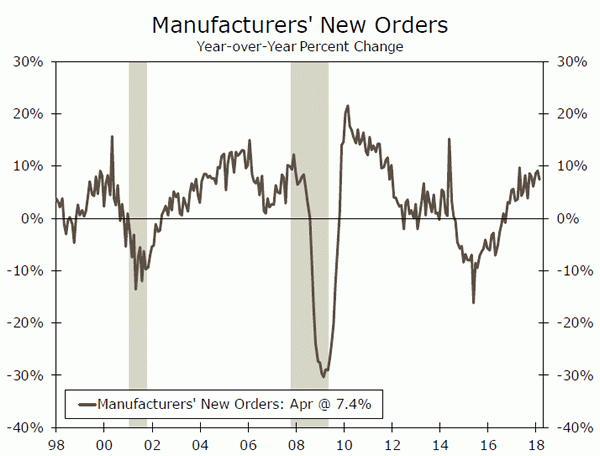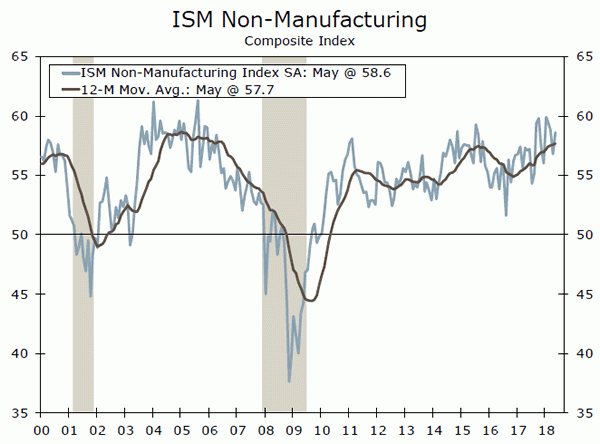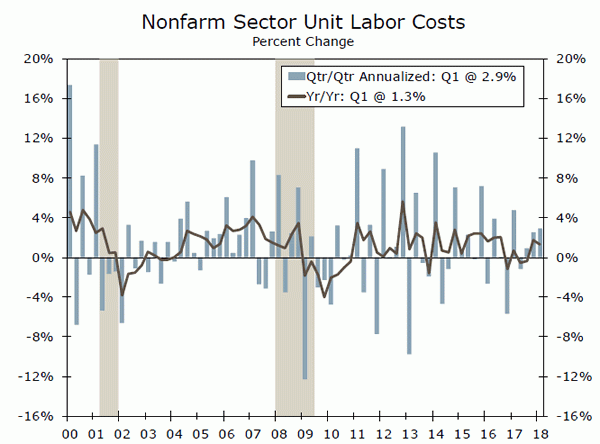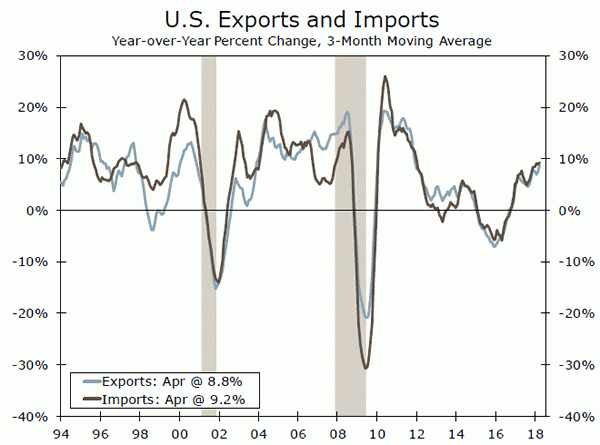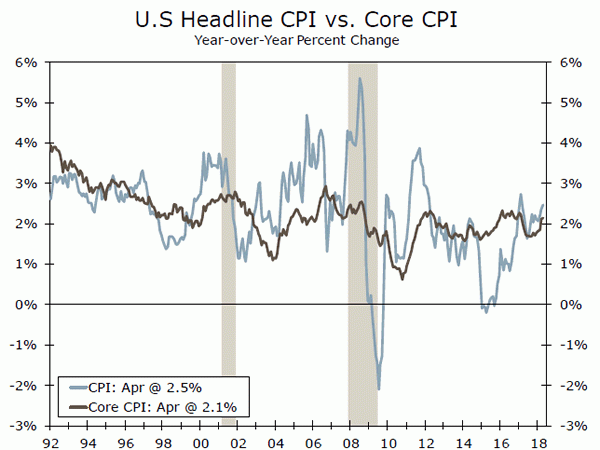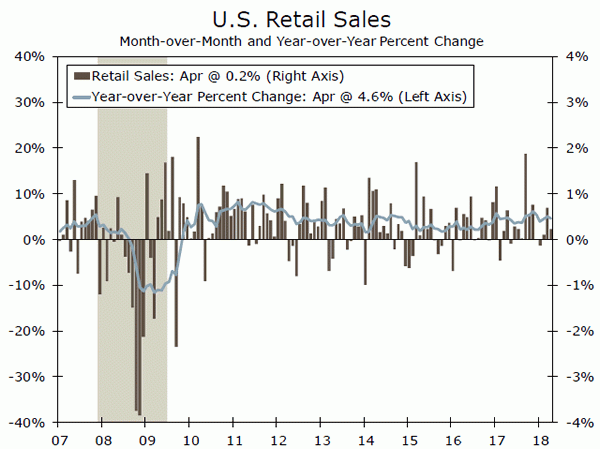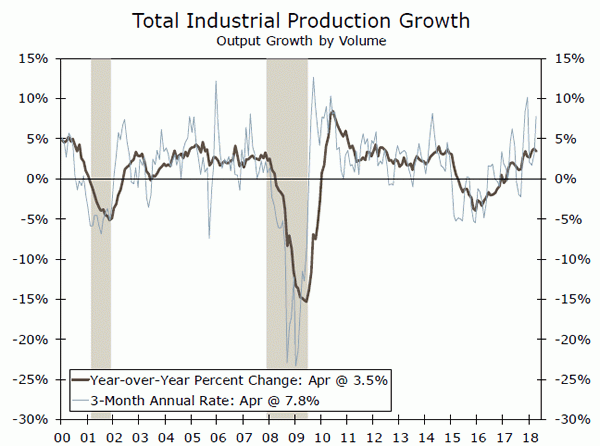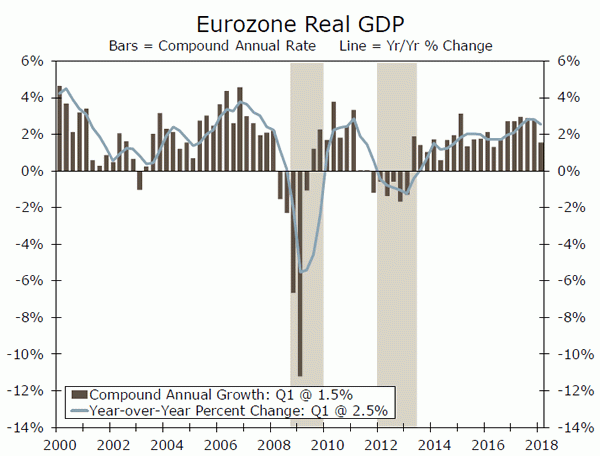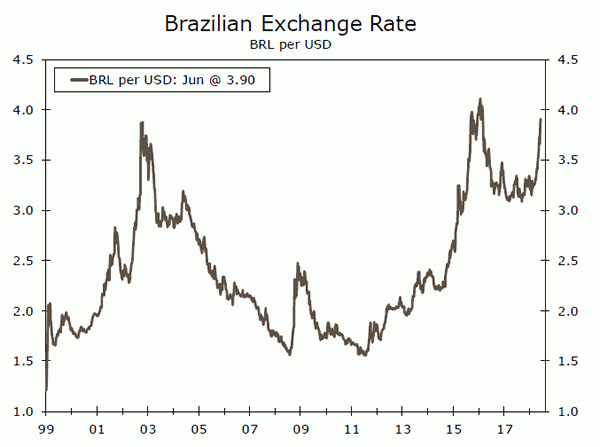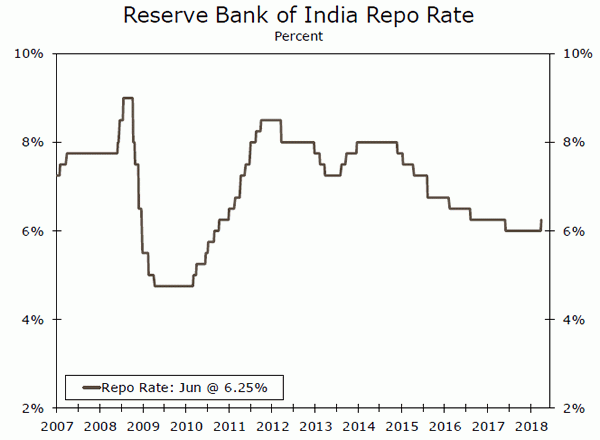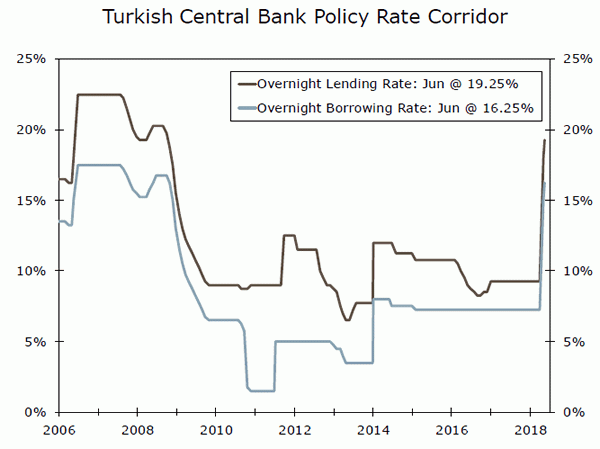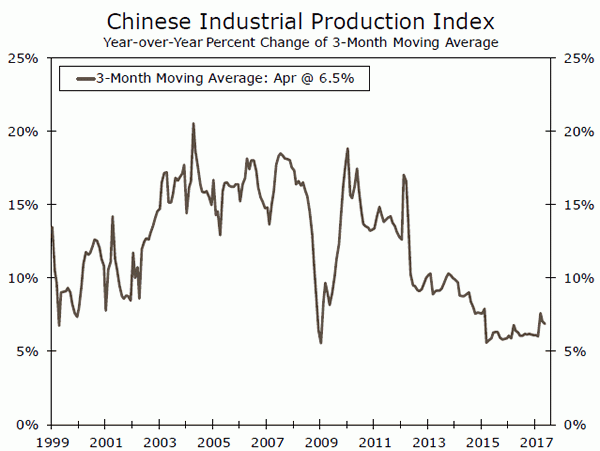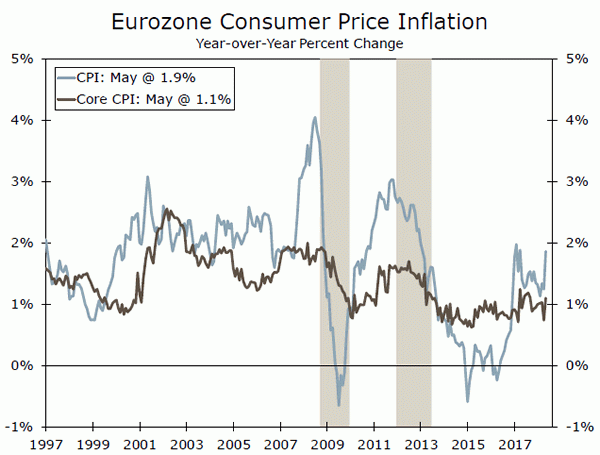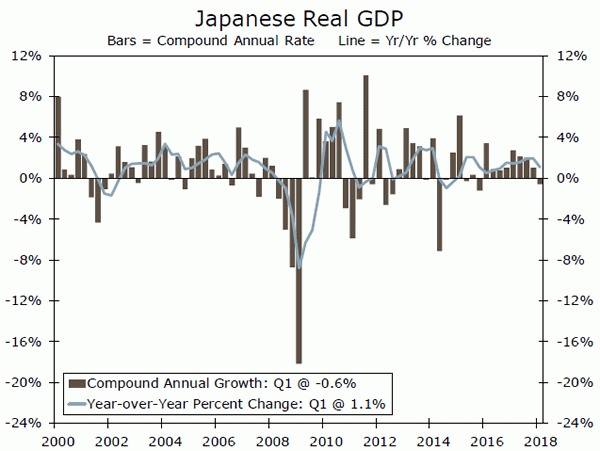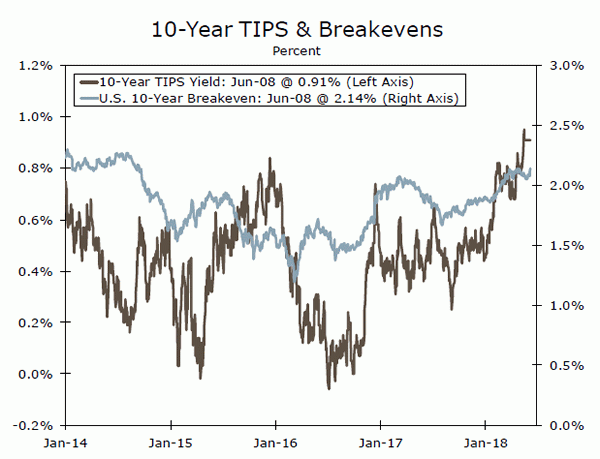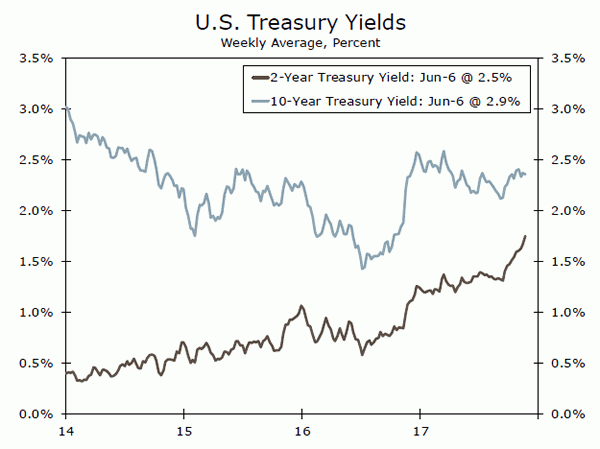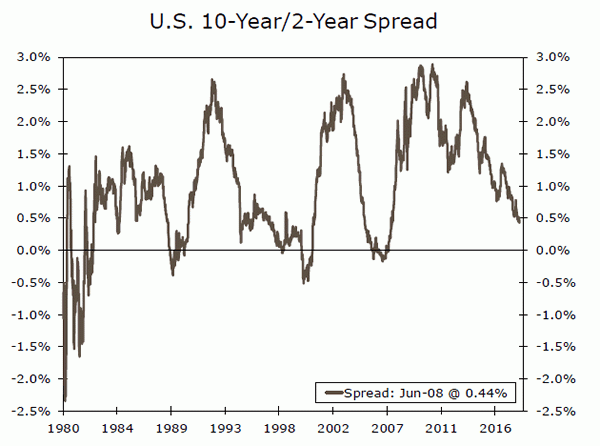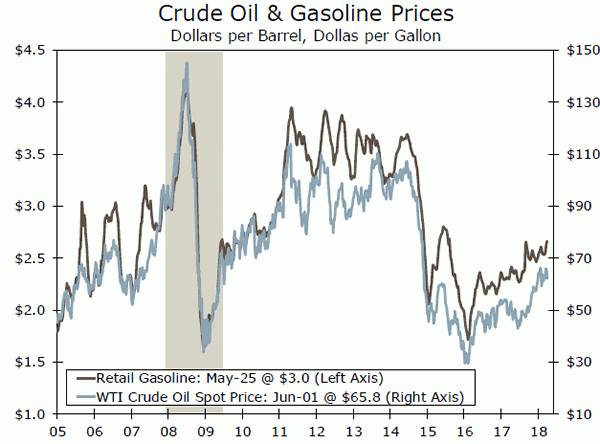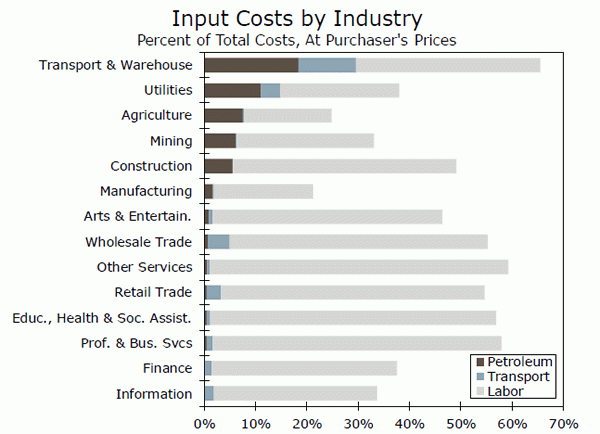U.S. Review
Less Slack in the Economy
- April factory orders slid in the wake of a strong March reading, however the details of the report remained supportive of modest equipment investment in Q2.
- May’s ISM non-manufacturing survey strengthened for the month but showed signs of input costs rising.
- The trade deficit narrowed in April signaling that trade is likely to add to GDP growth again in the second quarter.
- Productivity rose 0.4 percent in Q1, while unit labor costs climbed 2.9 percent (annualized), signaling a continually tightening labor market.
Less Slack in the Economy
This week, economic data mostly reflected the effects of less slack in the economy. Factory orders showed another backlog of unfilled orders, while the ISM non-manufacturing report highlighted increasing input cost pressures in the service sector. Productivity growth improved 0.4 percent in the first quarter but unit labor costs grew 2.9 percent on an annualized basis. In short, with the robust pace of GDP growth we are forecasting in the second quarter (4.2 percent) combined with a continued reduction in slack in both the supply chain and the labor force, we see the scene set for a higher inflation environment as the year progresses.
April factory orders declined 0.8 percent, reversing part of March’s 1.7 percent increase. The closely watched core capital goods shipments component climbed 0.9 percent in the first month of the quarter, supporting our view of a modest pace of equipment investment. There were, however, signs of strain in the supply chain as the number of unfilled orders has climbed in five of the last six months.
May’s ISM non-manufacturing reading notched another gain, rising to 58.6 from 56.8 in April. Like the factory orders report, the ISM non-manufacturing report showed that order backlogs are rising at the fastest pace in the survey’s history. Supplier delivery times are also increasing. The diminished slack in both the manufacturing and service sectors of the economy reflects the ongoing robust pace of overall economic activity and signals upside risks to price pressures in the coming months. To that end, the ISM’s survey showed that the prices paid component rose for the third month in a row and now stands at 64.3, up from 59.9 in December of last year.
The final look at first quarter productivity showed that the measure rose 0.4 percent from the prior quarter but the bigger story was another gain in unit labor costs, which now stands at 2.9 percent on an annualized basis. The higher unit labor costs combined with the higher prices paid component of the ISM indices also underscore the continual tightening in the labor market.
The trade deficit shrunk in April to $46.2 billion from March’s $47.2 billion deficit. Imports in April fell 0.2 percent, while exports picked up 0.3 percent for the month. The surprising strength in export growth is likely to add to GDP growth in Q2. In our forecast, released this week, we see net exports adding 0.7 percentage points to headline GDP growth for the quarter.
Looking ahead to the remainder of the year, we are less optimistic that trade will continue to add to growth. One development we are watching closely is the potential fallout from the Trump administration’s recent string of tariff announcements. In particular, other trading partners have signaled their intent to match, and in some cases expand upon the types of goods subject to import tariffs. The net result, in our view, is likely some downside risk to export growth down the road once these tariffs start taking hold. The possibility also exists that such tariffs could create global inflationary pressures, particularly for intermediate goods in the production process.
U.S. Outlook
CPI • Tuesday
April’s CPI read came in a bit softer than expected at 0.2 percent for headline consumer inflation, while the core CPI was a more tepid 0.1 percent. The food and energy components have been quite volatile in recent months, particularly food prices which saw its largest monthly gain in nearly a year. The softer showing in core prices is likely just some payback from the rapid clip posted in the first quarter of 2018. The upward trend remains intact. The yearover- year increase in headline CPI rose to 2.5 percent, largely reflecting base effects from last year’s soft patch in wireless prices and other transitory factors.
The clearly upward trend in price pressure is sufficient for further Fed rate hikes. Inflation data for May will also see a boost from higher gasoline prices in the headline. Core inflation should also remain on an upward trend for the rest of the year as wage pressures and supply chain constraints put further pressure on prices.
Previous: 0.2% Wells Fargo: 0.3% Consensus: 0.2% (Month-over-Month)
Retail Sales • Thursday
Retail sales rose a solid 0.2 percent in April and sales in March were revised higher to 0.7 percent. The consumer clearly had solid momentum going into the second quarter. The strongest retail categories in April were clothing and accessories and miscellaneous stores. Gas stations sales were also boosted by higher prices, which likely continued into May. Auto sales were basically flat in April on the heels of an impressive 2.0 percent increase in March.
Control group sales, which is a proxy for personal consumption in the GDP tables, was relatively strong in April with a 0.5 percent gain. That acceleration is a good start to Q2, which we anticipate will be an impressive bounce back from Q1 PCE. Our forecast calls for personal consumption to expand at a 3.4 percent pace in Q2 after a softer 1.0 percent rate in Q1.
Previous: 0.2% Wells Fargo: 0.4% Consensus: 0.4% (Month-over-Month)
Industrial Production • Friday
Industrial production rose 0.7 percent in April to a fresh all-time high. All three major categories contributed to the increase. Manufacturing production rose 0.5 percent, mining extraction increased 1.1 percent and utilities rose 1.9 percent on the month. The strong showing in April represented a good start to Q2 after a softer Q1, which revisions made slightly lower in April. Still, the firming trend in U.S. industrial output is clear now that the energy-driven sectors of the economy are back in expansion territory.
Capacity utilization rose 0.4 percentage points to 78.0 percent in April, in line with its 2013 level and 1.6 points below the cycle high posted in November 2014. The absorption of excess slack in production bodes well for the equipment investment line of GDP going forward as businesses work to meet rising demand for products. Tightening in the supply chain and labor market should incentivize continued spending on more equipment going forward.
Previous: 0.7% Wells Fargo: 0.2% Consensus: 0.3% (Month-over-Month)
Global Review
Emerging Markets Feel the Pain; Eurozone Q1 GDP
- Several weeks after Argentina and Turkey sent chills across emerging markets as currencies faced increased pressure, it seems that it is Brazil’s turn this week, as the Brazilian currency has weakened to about 3.90 reais per U.S. dollar.
- In the Eurozone, government expenditures remained flat in the quarter after an unrevised 0.3 percent increase in the previous quarter and market expectations of a 0.2 percent increase.
- China reported slightly lower foreign exchange reserves in May, down a bit more than $14 billion compared to April. This was the third consecutive monthly decline.
Emerging Markets Global Interest Rate Pain
Several weeks after Argentina and Turkey sent chills across emerging markets as currencies faced increased pressure, it seems that it is Brazil’s turn this week as the Brazilian currency has weakened to about 3.90 reais per U.S. dollar. Several weeks ago, analysts were calling for the Brazilian central bank to lower interest rates in the following meeting of the COPOM, the central bank’s policy committee. However, they were surprised with the bank’s decision to keep interest rates unchanged. Now there are some analysts calling for the central bank to start increasing interest rates. The Brazilian central bank will probably have to walk a fine line, as recent inflation numbers have been higher than expected, and it does not want expectations on inflation to start moving up. Furthermore, the recent currency jitters are just an added concern for an economy that is facing increased uncertainty due to the upcoming presidential political cycle where the leading candidates today are not perceived to be market/business friendly folks.
In India, the Reserve Bank of India (RBI) surprised markets with a 25 bps increase to its main repurchase rate, perhaps reacting not only to a strengthening economy but also to pre-empt any spillover effect from the recent crises in Argentina, Turkey and other emerging market economies. The RBI also increased the reverse repo rate by 25 bps to 6.00 percent while leaving the cash reserve ratio unchanged at 4.00 percent.
Meanwhile, Turkey’s central bank also unexpectedly increased interest rates in an effort to defuse the pressure over the country’s currency. The central bank increased the one-week repo rate by 125 bps while markets were expecting the bank to stay put at 16.50 percent. The rest of the rates were also increased 125 bps, the overnight lending rate to 19.25 percent while the overnight borrowing rate was increased to 16.25 percent.
China reported slightly lower foreign exchange reserves in May, down a bit more than $14 billion compared to April. This was the third consecutive monthly decline. However, foreign reserves remained slightly above $3.1 trillion, which is still a high foreign exchange reserve level.
Details of Eurozone Q1 GDP Better Than Expected
The Eurozone released detailed results for the demand side of the economy and while the overall result did not change, up 0.4 percent sequentially, not annualized, household consumption was higher than expected, up 0.5 percent versus market estimates of only 0.2 percent. Meanwhile, although gross fixed capital formation was lower than expected, up 0.5 percent versus expectations of a 0.7 percent increase, the previous quarter result was revised up from an original increase of 0.9 percent to 1.3 percent, sequentially and not annualized. Government expenditures remained flat in the quarter after an unrevised 0.3 percent increase in the previous quarter and market expectations of a 0.2 percent increase. On a year-earlier basis, GDP for the Eurozone was up 2.5 percent, agreeing with consensus expectations but lower than in Q4 of last year when it grew at a 2.8 percent rate.
Global Outlook
China Industrial Production • Wednesday
Next Wednesday, data on Chinese industrial production, fixed investment spending and retail sales will be reported for May. Thus far, economic indicators for the quarter suggest another dose of steady growth in Q2. Purchasing manager indices have been relatively flat over the past few months, while some April weakness in retail sales was offset by stronger-than-expected industrial production. With several smaller emerging market economies like Argentina and Turkey showing signs of stress, continued steadiness in the data out of China would be beneficial to global markets. In addition to the data next week, the White House has stated that it plans to announce a verdict on the tariffs it has proposed on imported Chinese goods by June 15. With Chinese policymakers trying to tightly control a gradual economic deceleration amid deleveraging efforts, tariffs on U.S. imports from China are a downside risk to growth in the quarters ahead.
Previous: 7.0% Consensus: 7.0% (Year-over-Year)
European Central Bank Meeting • Friday
The European Central Bank (ECB) will meet next week at what could be a crucial inflection point for monetary policy in Europe. Expectations had been building for months that the ECB would end or taper its purchases further in October. However, over the past couple months, a soft patch in growth and inflation coupled with political turbulence in Italy and Spain have raised questions about whether the ECB would actually cease buying by year’s end.
We continue to remain of the view that the ECB will taper once more in October and end purchases by the end of 2018. Recent public comments by ECB officials have made markets aware that this will be a “live” meeting to discuss the end of asset purchases despite recent events. We do not envision a rate hike from the ECB until mid- 2019, and firming growth and inflation fundamentals in the coming months would go a long way towards keeping the tightening process moving in Europe.
Previous: 0.00% Wells Fargo: 0.00% Consensus: 0.00% (Refinancing Rate)
Bank of Japan Meeting • Friday
The Bank of Japan (BoJ) will meet at the end of next week in what will likely be a quieter meeting relative to the Fed and ECB over the two previous days. The Japanese economy contracted in Q1, snapping a streak of eight consecutive quarters of expansion. Inflation, while off its recent lows, has remained well short of the BoJ’s 2 percent target through the first half of 2018.
At its April meeting, the BoJ held interest rates steady and maintained its comprehensive program of monetary policy support, but it dropped any reference to a timeline for achieving its 2 percent inflation target, although Governor Kuroda affirmed multiple times that the removal of the date was not in any way an indication of monetary policy bias. Given both the recent and historical track record for growth and inflation in Japan, we expect the BoJ to maintain its current degree of monetary policy accommodation for the foreseeable future.
Previous: -0.10% Wells Fargo: -0.10% Consensus: -0.10% (Policy Rate)
Point of View
Interest Rate Watch
Benchmark Yields and Inflation
While the 1o-year U.S. Treasury yield is treated as a benchmark for the bond market, the evidence indicates that the yield is not mean-reverting and is characterized by high volatility. One factor that does cause a change in the 10-year yield is the growth of nominal GDP.
Break Evens and Inflation
As illustrated in the top graph, both the breakeven and TIPS components of the 10-year have risen over the past year, and this would be consistent with the upswing in nominal GDP.
That upswing has also supported the case for the Federal Reserve to continue on its dot-plot path to raise the funds rate, which we expect it to do at its meeting next week. The rise in the breakeven rate is consistent with the rise in actual and expected inflation. Since early 2015, measures of average hourly earnings, the ISM prices paid index and the PCE deflator have all moved upward. Meanwhile, the TIPS yield has also moved higher on trend since last year, as would be consistent with an increase in real yields, reflecting a stronger economic expansion in recent months.
But if the FOMC Moves, Then What?
One interesting dynamic is that the expected pace of FOMC moves appears to be more aggressive than market expectations of real growth and inflation. As illustrated in the middle graph, since mid-2016 the two-year yield has risen more than the 10-year yield. The market is discounting a faster pace of FOMC rate hikes than the combined effect of faster real growth and inflation going forward. This is typical of this stage of the business cycle and the pattern of a flatter yield curve.
Inflation Overshoot and Yield Curve?
For decision makers, there is a distinct issue facing us in the first half of 2019. A pattern of continued FOMC tightening will tend to raise the two-year rate faster than the pace of our expected nominal GDP gains, thereby leading toward an inverted yield curve (bottom graph). Recent FOMC commentary has intimated that some members would let inflation overshoot the perceived two percent target and by implication avoid an inverted yield curve—an interesting policy tradeoff.
Credit Market Insights
Consumer Credit Slows Once Again
Consumer credit slowed for the third consecutive month in April, expanding $9.3 billion during the month. This fell short of consensus expectations for a $14.0 billion expansion on the month. Both revolving and non-revolving credit grew by below their averages for the current cycle, rising $2.3 billion and $7.0 billion, respectively.
The U.S. consumer has helped sustain the duration of the current economic expansion. Rising levels of consumer credit helped drive personal consumption, backed by strong confidence in the economy. Recent consumer credit prints that have been weaker than expected are beginning to cast doubt upon the strength of the consumer, as slowing credit balances indicate a more wary and cautious disposition toward spending. We are not expecting a halt to credit, but it is something that merits watching.
Part of the slowing credit story could be explained by the Fed’s accelerating tightening policy, which has lifted shortterm interest rates. This makes outstanding balances on credit cards, auto loans and other consumer debt products more expensive. We expect the FOMC to continue raising rates throughout the end of 2019. Delinquency rates are also rising across all product types, as debt is becoming more expensive and harder for consumers to cover. We will be watching closely consumer credit reactions to rising borrowing costs amid monetary policy tightening.
Topic of the Week
Double, Double Oil and Trouble
Oil prices have more than doubled since early 2016, including a 40 percent increase in WTI over the past year. Consumers have been paying up at the pump as a result. Through April, the Consumer Price Index (CPI) for gasoline was up more than 13 percent year over year and had added half a percentage point to the 2.5 percent increase in the CPI. Inflation, as measured by the PCE deflator, returned to the Fed’s 2.0 percent inflation target in March, due in no small part to energy prices.
For the Fed, inflation will remain the primary focus for near-term policy. However, central bankers typically exclude food and energy prices when analyzing trend inflation, since price fluctuations are often driven by short-term changes in supply. Therefore, from a monetary policy perspective, higher energy prices matter mostly in terms of how much they feed into core inflation.
If persistent, energy price changes should eventually be transmitted to “core” prices as businesses, facing higher transportation and/or production costs, charge more for goods and services. However, in general, petroleum products and transportation represent a relatively small share of inputs. Labor remains by far the biggest input cost for most industries, and particularly services, which dominate the core inflation index. Therefore, the passthrough of higher oil prices to core consumer prices is ultimately quite small. Analyzing data since 1980, we find only a slight positive correlation between oil prices and core inflation (0.124), even when accounting for a lag.
Another mechanism through which oil prices can indirectly support core inflation is by supporting inflation expectations, since price changes at the pump are highly visible to consumers. Consumer expectations of longterm inflation have yet to recover the ground lost since 2014, but have held steady since the start of the year.
Overall, we expect a minimal effect from energy on core inflation. A tight labor market and core PCE inflation headed to 2.0 percent, irrespective of energy prices, should keep the Fed on track for three more rate hikes this year, For more, see our recent report “Running on Empty: Energy and the Inflation Outlook.”




